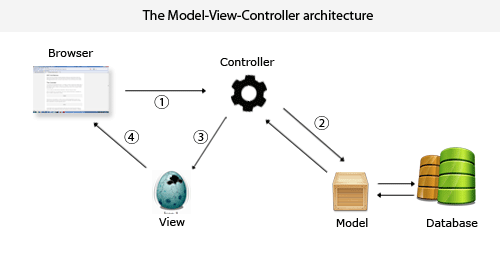


1、编程: 单例模式
<?php
echo '<pre>';
class Config1{}
$obj1=new Config1();
$obj2=new Config1();
var_dump($obj1,$obj2);
var_dump($obj1==$obj2);
echo '<hr>';
class Config{
private static $instance=null;
public $setting=[];
//禁止从类的外部实例化对象
private function __construct() {
}
//禁止克隆
private function __clone() {
}
//外部睛允许通过一个公共静态方法创建实例
public static function getInstance(){
if(self::$instance ==null){
self::$instance=new self();
}
return self::$instance;
}
//设置操作
public function set(){
$num= func_num_args();
if($num<=0){
echo '<span style="color:red">无参数</span>';
return;
}
switch ($num){
case 1:
$value= func_get_args(0);
if(is_array($value)){
$this->setting= array_merge($this->setting,$value);
}
break;
case 2:
$name= func_get_arg(0);
$value= func_get_arg(1);
$this->setting[$name]=$value;
break;
default :
echo '<span style="color:red">非法参数</span>';
}
}
//get
public function get($name=''){
if(empty($name)){
return $this->setting;
}
return $this->setting[$name];
}
}
//$obj3=new Config();
//$obj4=new Config();
$obj3 = Config::getInstance();
$obj4 = Config::getInstance();
var_dump($obj3,$obj4);
var_dump($obj3===$obj4);
$obj3->set('host','127.0.0.1');
print_r($obj3->get());
echo '<hr>';
//test array
$config=['host'=>'Localhost','user'=>'root','password'=>'123'];
$obj4->set($config);
print_r($obj3->get());点击 "运行实例" 按钮查看在线实例
2、编程: MVC的实现原理
(1)model
<?php
//模型类
namespace mvc\model;
class Model {
public $pdo = null;
//连接数据库
public $result = [];
public function __construct($dbname, $user, $pass) {
$this->pdo = new \PDO('mysql:host=127.0.0.1;dbname=' . $dbname, $user, $pass);
}
//查询
public function select($table, $num) {
//创建预处理对象
$stmt = $this->pdo->prepare("SELECT `staff_id`,`name`,`age`,`salary` FROM {$table} LIMIT :num");
//执行查询
$stmt->bindValue(':num', $num, \PDO::PARAM_INT);
$stmt->execute();
$this->result = $stmt->fetchAll(\PDO::FETCH_ASSOC);
}
}点击 "运行实例" 按钮查看在线实例
(2)view
<?php
namespace mvc\view;
class View{
public $data=[];
public function __construct($data) {
$this->data=$data;
}
public function getData(){
return $this->data;
}
//渲染模板
public function display($data){
$table='<!doctype html>
<html lang="en">
<head>
<meta charset="UTF-8">
<meta name="viewport"
content="width=device-width, user-scalable=no, initial-scale=1.0, maximum-scale=1.0, minimum-scale=1.0">
<meta http-equiv="X-UA-Compatible" content="ie=edge">
<style>
table,th,td{
border:1px solid black;
}
</style>
<title>MVC简介</title>
</head>
<body>
<table>
<caption>员工信息表</caption>
<tr>
<th>ID</th>
<th>姓名</th>
<th>年龄</th>
<th>工资</th>
</tr>
';
foreach($data as $staff){
$table.='<tr>';
$table.='<td>'.$staff['staff_id'].'</td>';
$table .= '<td>' . $staff['name'] . '</td>';
$table .= '<td>' . $staff['age'] . '</td>';
$table .= '<td>' . $staff['salary'] . '</td>';
$table.='</tr>';
}
$table.='</table></body></html>';
echo $table;
}
}点击 "运行实例" 按钮查看在线实例
(3)controllor
<?php
namespace mvc\controllor;
use mvc\model\Model;
use mvc\view\View;
class Controllor{
public function index(){
require './model/Model.php';
$model=new Model('php','root','root123');
$model->select('staff',10);
$result=$model->result;
require './view/View.php';
$view=new View($result);
$data=$view->getData();
$view->display($data);
}
}点击 "运行实例" 按钮查看在线实例
3、问答: MVC的设计思想是什么?
在课堂上老师演示了这样一幅图
以下引自网络查找资料:
(1)mvc是一种软件架构的思想,将一个软件按照模型、视图、控制器进行划分。其中,模型用来封装业务逻辑,视图用来实现表示逻辑,控制器用来协调模型与视图(视图要通过控制器来调用模型,模型返回的处理结果也要先交给控制器,由控制器来选择合适的视图来显示 处理结果)。
1)模型: 业务逻辑包含了业务数据的加工与处理以及相应的基础服务(为了保证业务逻辑能够正常进行的事务、安全、权限、日志等等的功能模块)
2)视图:展现模型处理的结果;另外,还要提供相应的操作界面,方便用户使用。
3)控制器:视图发请求给控制器,由控制器来选择相应的模型来处理;模型返回的结果给控制器,由控制器选择合适的视图。

(2)为什么要使用mvc
1)使用mvc的思想来设计一个软件,最根本的原因是为了实现模型的复用:
a,模型不用关心处理结果如何展现。 比如,模型返回一些数据,然后交给不同的视图来展现(表格的方式、图形的方式等等)。
b,可以使用不同的视图来访问同一个模型。
2)代码的维护性更好
修改模型不会影响到视图,反过来,修改视图,也不会影响到模型。
3)方便测试